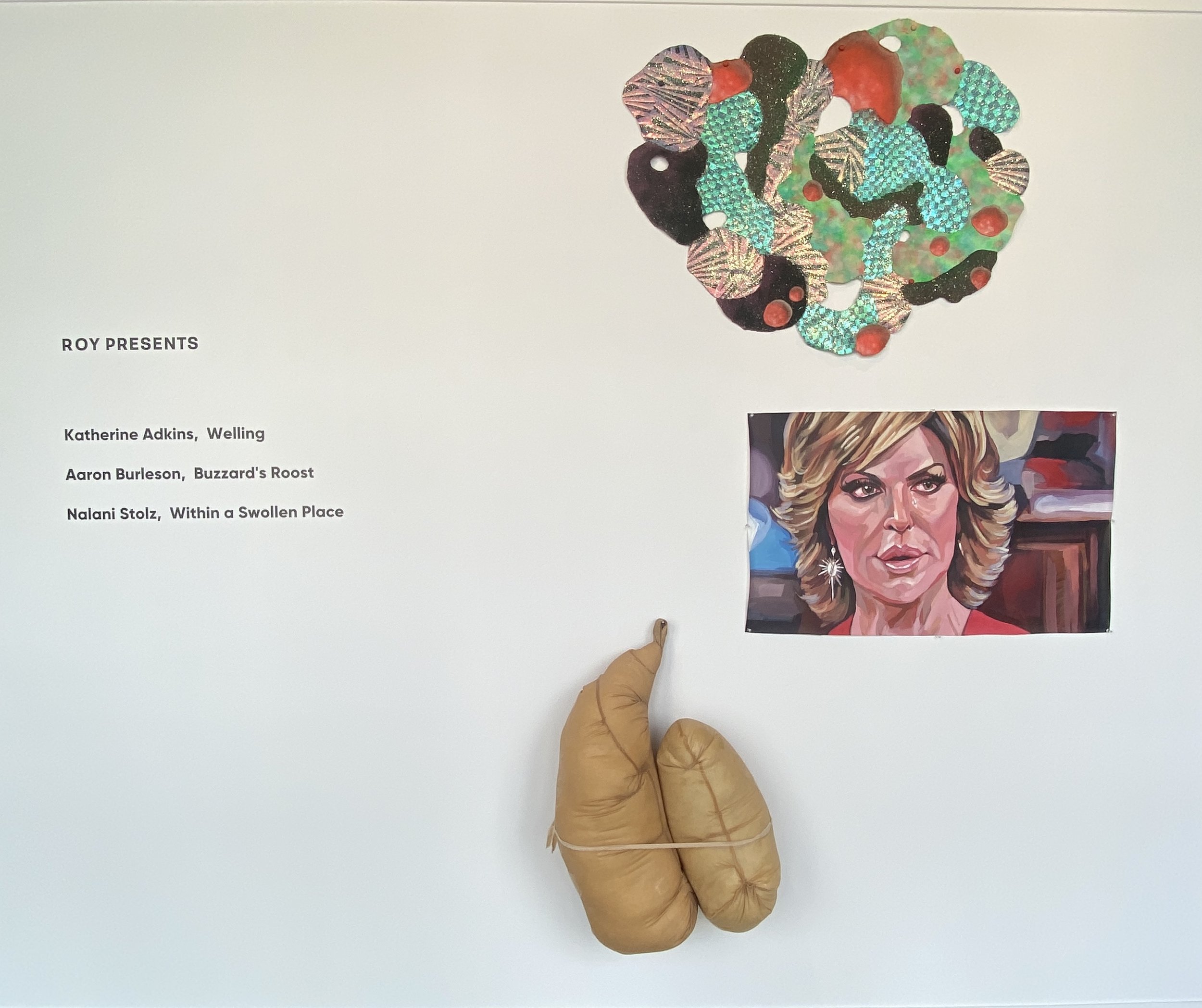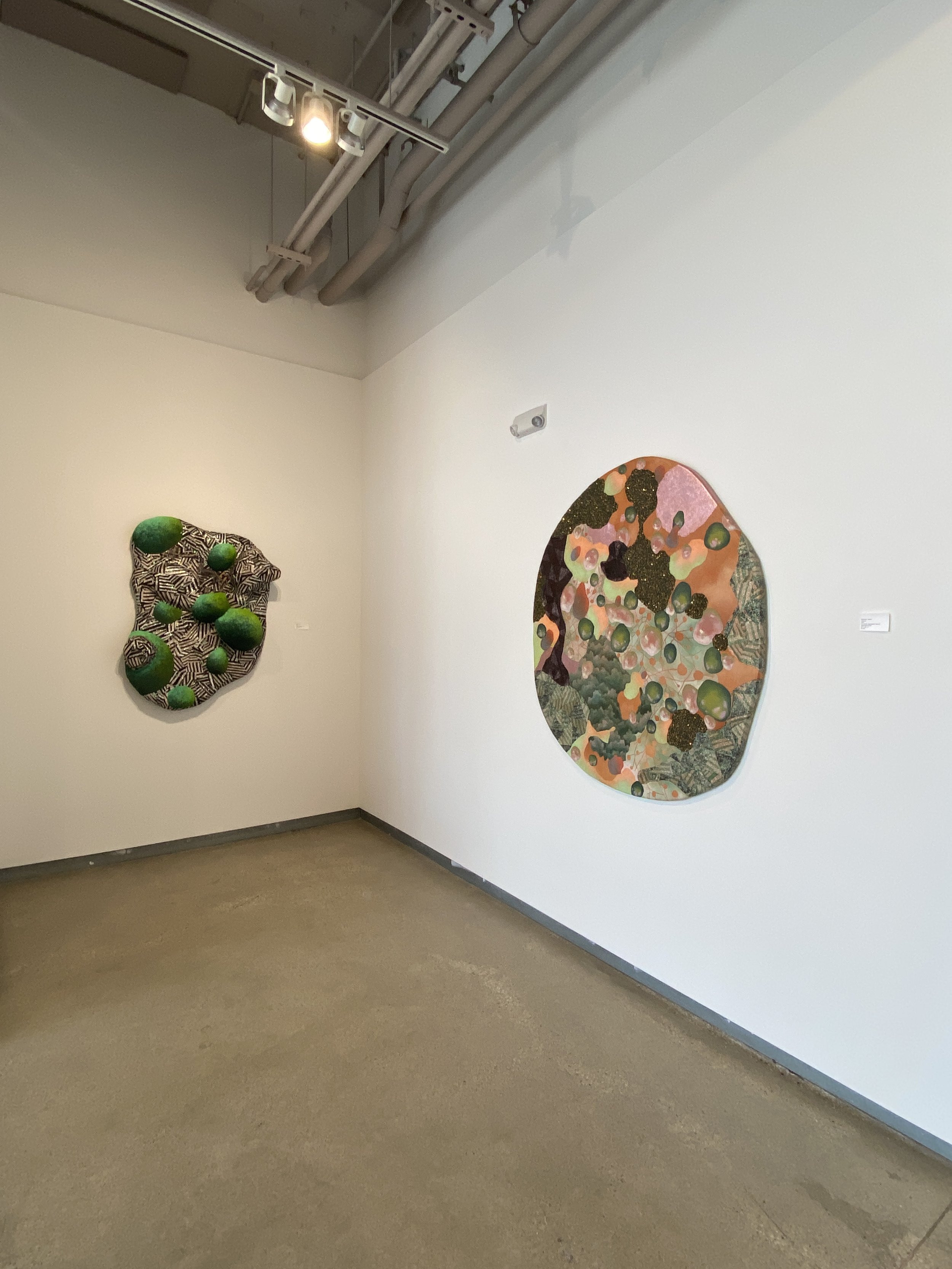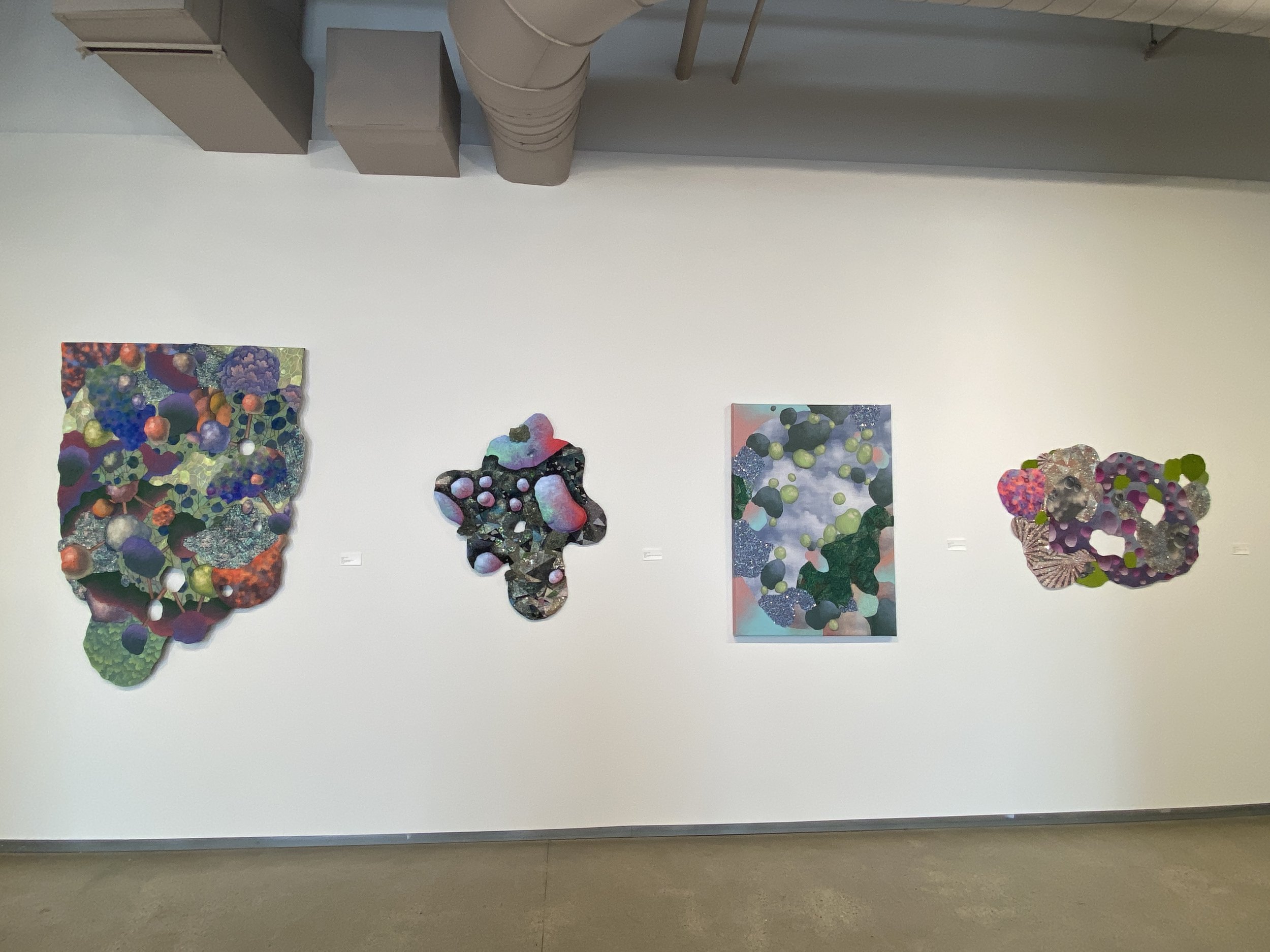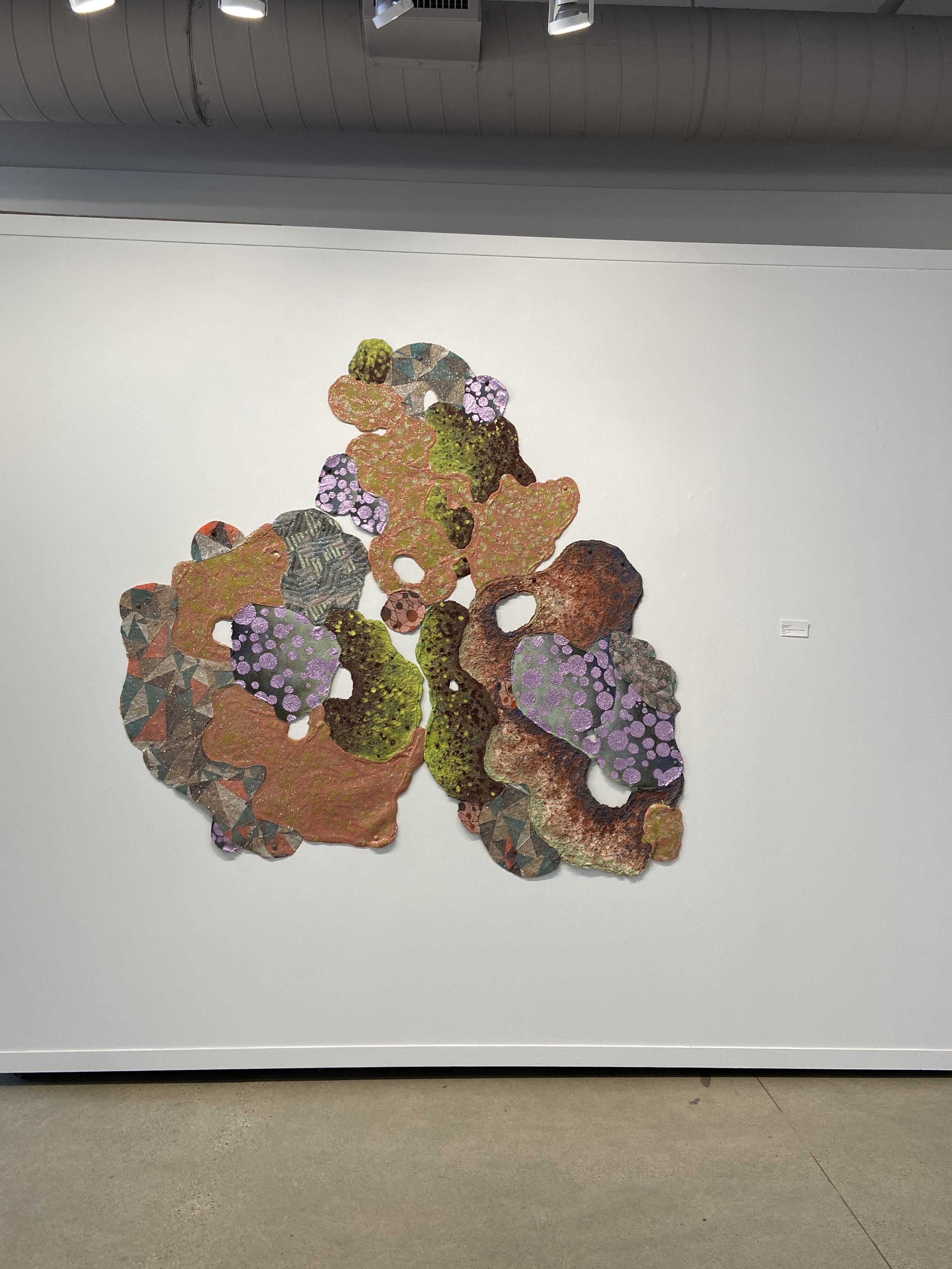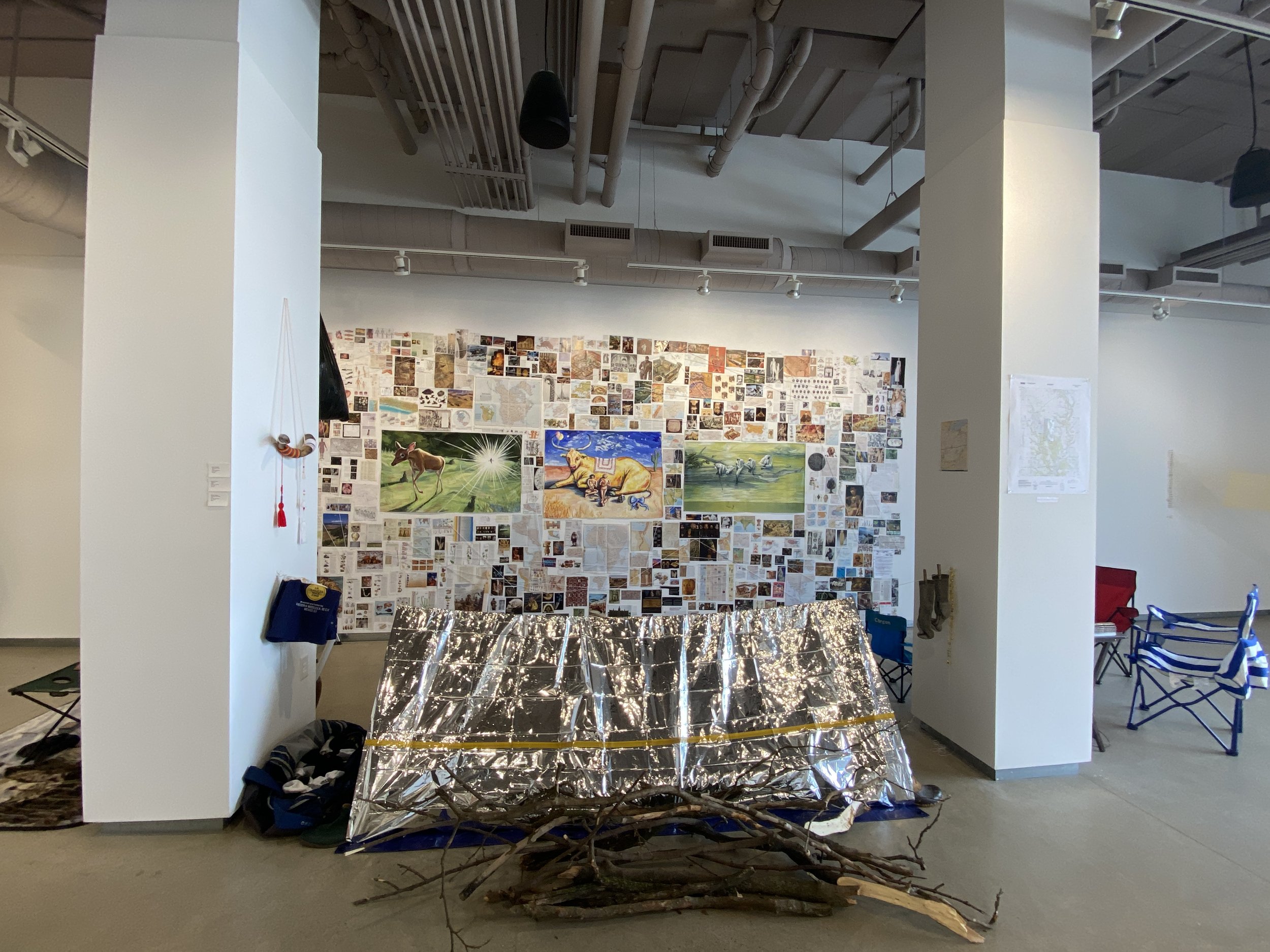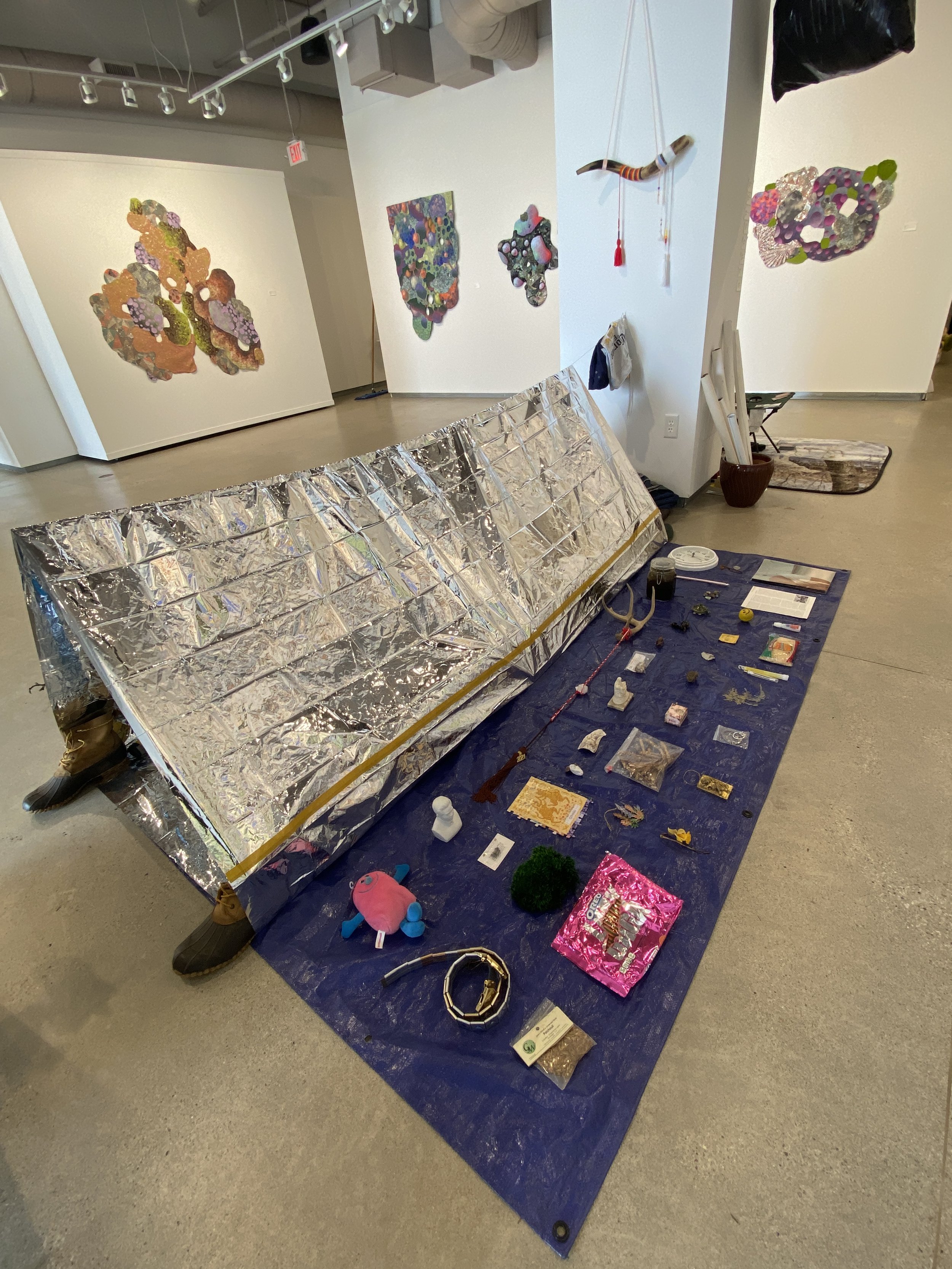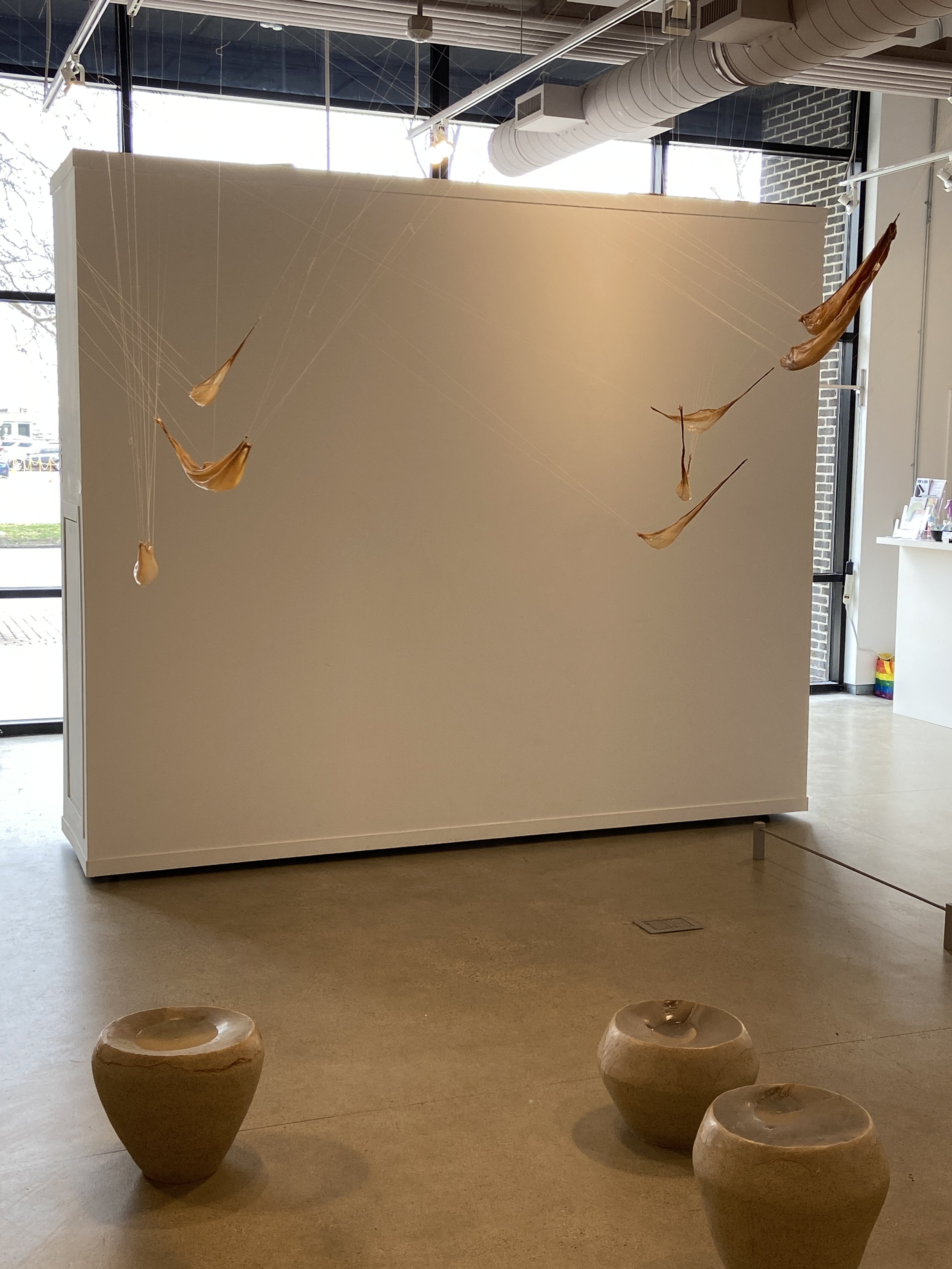ROY presents: Aaron Burleson, Katherine Adkins, Nalani Stolz
Aaron Burleson
Buzzard’s Roost
My work concerns the relationships we form between one another, the land, the divine, and the work itself. I see figurative painting as a tool for actualizing unsustainable fantasies, even if only as an illusion. Therefore the connection is always one-sided. This frustrated disconnect between the living viewer and static subject is fascinating. The relationship borders on delusion. But delusions can be healthy, necessary even, as well as corrosive. In a time of intense social isolation, I am interested in using conspiratorial or magical thinking as a means to relate to the viewer. Painting has a history of forging these delusions through manipulation of the subject, for better or for worse, and I believe this is what makes it a worthwhile medium.
Each image is clearly staged, relying on a cast of unique characters that form a mythology of their own. Very few works focus on the same topic or ideology. But they share the same psychic ambiguity, living in a space between beautiful and insane, or between sincere and sardonic. Most scenes unfold like fairy tales, incorporating crudely formed humans or fantastic animals into an unfamiliar landscape. On the other end, I source images from the internet with similar, but more worldly messaging. Tenderness and aversion work hand-in-hand to provoke the viewer. In a time flooded with atomized personalities and shareable images, I aim to make work that feels conflicted, devotional, and outside of the present moment.
The works are made on unstretched canvas, painted on the floor as I walk around it. I want to stress the simplicity of the material - It is all about the image. They can be displayed on their own, but if given a chance they could take on the form of an installation, surrounded by domestic objects like blankets, couches, and other editions of the surreal “lifestyle” magazine I made, listed at the end of my list of works. It could also incorporate audio recordings and music to disorient the viewer. I am interested in drawing the audience into an intimate space, disarming them with absurdity and feelings of suspicion or comfort.
ROY asks
What is your name and preferred pronouns
Aaron Burleson. He/him
fHow has art (whether it be your own or art in general) changed you?
I think art makes me sharper, more aware of myself and my environment. The process of making takes attention and conviction, which can be difficult to cultivate.
How did you start your artistic practice?
I started drawing birds from an Audubon field guide as a kid and didn’t stop.
When a first-time viewer sees your work, what is the first word that you hope they think when looking at it?
If I had to choose one feeling, I guess I’d like my work to feel familiar. Like some kind of home.
Katherine Adkins
Welling
My paintings weave bodily, topographical, celestial, and emotional abstractions, urging empathy and connectedness. Forming feelings with the physicality of paint and aggregates, my haptic works seek sensations over narratives. Imagery of clusters, seeds, and antennae parallel a desire for community, hope, future, and receptivity. The work thinks about subject-object relations, choosing non-figurative abstraction as a stance to object objectification, and instead, advocate relationships and mutual respect, citing boundaries of bubbles and dissolving delineations.
ROY asks
What is your name and preferred pronouns
Katherine Adkins (she/her/hers)
How has art (whether it be your own or art in general) changed you?
Art has always been integral to my being, but standing in front of artwork by Elizabeth Murray and Nick Cave were life changing experiences. Murray’s paintings immersed me and surprised me. Cave’s circular wire-stranded wall sculptures called me to a state of care and empathy with their furlike cowlicks and enchantment by their shiny complexities.
How did you start your artistic practice?
My artistic practice has evolved from young crafts and public school art class to higher education to a personal lifelong project of research and sharing my vision with material.
When a first-time viewer sees your work, what is the first word that you hope they think when looking at it?
wonder
Nalani Stolz
Within a Swollen Place
The bodies I craft bulge, grow and break down. Their holes and orifices slowly release and leak. Their taut skin stretches and pulls; leaving soft lines across their surfaces. Through my work, I grapple with how it feels to inhabit our bodies, these every-shifting forms. Exploring the ways they hold together all the mushy, heavy, fragile pieces. My materials draw from the domestic skills learned from my mother, the labor and tenderness in daily tasks, such as these, passed from her body to mine. Through sculptural forms, I reclaim these materials and processes, giving them new spaces. The bodily forms and processes in my work draw on the often-gendered experiences of weeping, urination, menstruation, miscarriage and pregnancy. Each work shifting over the course of an exhibition to convey these slow processes of disintegration. Giving form to the feelings of expansion, heaviness and fullness and those of emptying out, of breaking down. The way these moments shift our seemingly solid edges and reveal our porous boundaries. They remind us that we are dying, changing, decaying vessels, loosely contained by skin, muscle, and bone.
ROY asks
What is your name and preferred pronouns
Nalani Stolz - she/her/hers
How has art (whether it be your own or art in general) changed you?
It gives a place of mourning and stillness. It has taught me how to be materially in my body and give space to my emotions.
How did you start your artistic practice?
I have been making objects and exploring materials for as long as I can remember. Throughout my childhood, building things was a strong focus in my education, so I grew up working with wood, clay, fiber, and any other materials we could find, as well as learning to paint and draw from a young age.
When a first-time viewer sees your work, what is the first word that you hope they think when looking at it?
Longing

